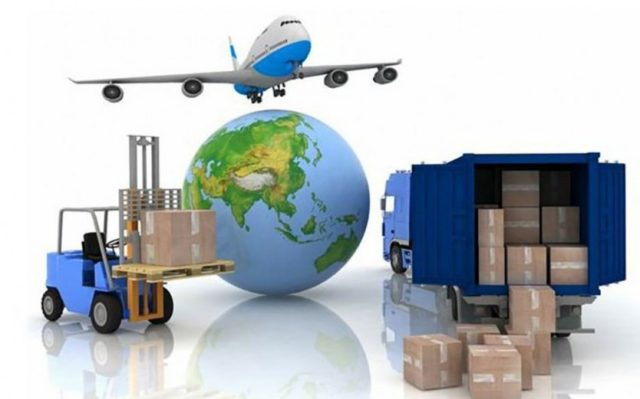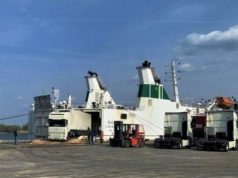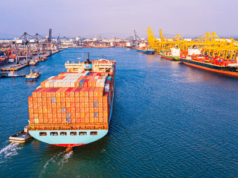The geographical location and resourcefulness of the Central Asian region and South Caucasus region have placed them at the crossroads of the economic, strategic, and political ambition of major stakeholders in the new multipolar world.
India, too, finds it important to build up its relationship with these regions in pursuit of its long-term goals, including energy security, trade, and infrastructure connectivity, Report informs, citing an India Briefing article on India’s trade and investment prospects with Turkmenistan, Uzbekistan, and Azerbaijan.
“These further link up to India’s security and strategic calculus, linked to developments like the US-led NATO withdrawal from Afghanistan, the actualization of China’s Belt and Road Initiative (BRI), and increasing Chinese influence in Central Asia with its recently launched “5+1″ format,” the article reads.
“Apart from being a reservoir of still untapped mineral resources, such as petroleum, natural gas, antimony, aluminum, gold, silver, coal, and uranium, these countries (Turkmenistan, Uzbekistan, and Azerbaijan) provide opportunities for Indian investment and cooperation in areas such as hydro-power sector, mining and metallurgical industries, construction industry, information technology, and tourism. Moreover, these states are key for sourcing the raw materials needed for India’s manufacturing ambitions.”
Speaking about the existing problems in trade and communications, the article notes that India’s economic engagement with these countries has been limited – due in part to their landlocked location with no direct sea route as well as the lack of a direct overland route for trade owing to testy relations with neighboring Pakistan.
India’s trade with Central Asia remains less than 0.5 percent of India’s total trade, amounting to around $2 billion, in stark contrast with China’s trade with the region at about $100 billion. India’s engagement with the South Caucasus region has been dismal too, but that is soon expected to change with recent connectivity and economic agreements between India and the region.
In the second meeting of the India-Central Asia dialogue held in October, 2020, India announced a $1 billion Line of Credit for priority development projects in diverse fields, such as connectivity, energy, info-tech, healthcare, education, agriculture, etc. India has also engaged in ‘vaccine diplomacy’ with its Vaccine Maitri Program, under which Uzbekistan received 0.6 million doses of vaccine from India.
Uzbekistan’s trade with India gradually increased since 2016, with export value registering a significant rise from $90.74 million in 2016 to $193.45 million in 2019. Imports from Uzbekistan to India have more than doubled, from $46.48 million in 2016 to $92.34 million in 2019. India’s exports to Uzbekistan were $260.76 million in 2020.
Uzbekistan offers lucrative opportunities for investors in the oil and gas industry and telecommunication and information technology industries. The country is seeking strategic partners to develop projects involving high-tech production in the petroleum, chemical, textile, pharmaceutical sectors and road construction.
In December 2020, New Delhi and Tashkent signed an MoU where India approved a $ 448 million Line of Credit for road construction and development of the IT sector for digital connectivity.
In 2019, Uzbekistan also invited India to join its proposed Afghanistan-Uzbekistan rail link project.
On December 14, 2020, the Trilateral Working Group Meeting between India, Iran, and Uzbekistan agreed on the joint use of Chabahar Port.
On the other hand, Azerbaijan is a net exporter to India, with the trade balance clearly in its favor due to crude oil exports.
Azerbaijani exports to India increased from $280.71 million in 2016 to $341.53 million in 2019. At the same time, Indian exports to Azerbaijan increased from $31.62 to $54.53 million.
Indian exports to Azerbaijan were valued at $125.97 million during 2020. In contrast, Indian imports from the country were valued at $456.80 million, of which $452.73 million could be attributed to mineral fuels, oils, and distillation products, which claimed the majority share. The Indian import basket in 2020 also consisted of inorganic chemicals (iodine), jet fuel, and plants for perfumes.
India’s exports to Azerbaijan comprise of cereals, rice, mobile phones, pharmaceuticals, organic chemicals, centrifugal liquid pumps, etc.
India’s trade with Azerbaijan has substantially increased since 2005, and it can be attributed to the opening of the Baku-Tbilisi-Ceyhan (BTC) oil pipeline to the Mediterranean port, from where Indian oil companies have been purchasing substantive quantities of crude oil.
Azerbaijan is an International North-South Transport Corridor (INSTC) member along with India and is also a dialogue partner with the Shanghai Cooperation Organisation (SCO).
“Negotiations are underway for an India-Azerbaijan DTAA (Double Taxation Avoidance Agreement), and for cooperation in the areas of information and communication technology (ICT), health, agriculture, tourism, customs matters, youth and sports, and tourism between both countries,” the article said.
Comparatively, Turkmenistan’s engagement with India remains low. However, since the launch of Connect Central Asia dialogue in 2012, Turkmenistan’s share in India’s export and import basket has increased.
Meanwhile, trade between Turkmenistan and India fell from $78.94 million in 2016 to $41.26 million in 2019, of which Indian exports are estimated at $37.3 million and Indian imports at $3.96 million. In 2020, India’s exports to Turkmenistan increased to $44.3 million.
Turkmenistan is the world’s fourth-largest exporter of natural gas. The TAPI pipeline has been under negotiation for some time, and once operational, the proposed 1,800 km long pipeline would be able to export up to 33 billion cubic meters of natural gas per year.
A look at the composition of India’s export basket to these countries reveals that India is primarily a supplier of consumer goods (for example, pharmaceuticals) and capital goods to these countries. Turkmenistan, too, has developed a market for Indian consumer goods.







